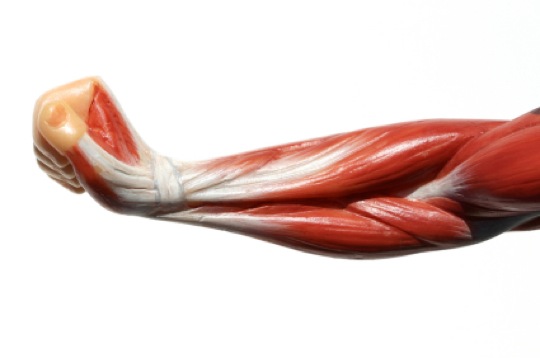INTRODUCTION
Patellar tendinopathy, commonly referred to as “Jumper’s Knee”, is a common overuse lower limb injury. In certain sporting populations, such as elite volleyball, the incidence can be as high as 45% (Lian et al., 2005). Thus, it is easy to see the importance of the identification of risk factors for patellar tendinopathy. Additionally, once identified such risk factors have clear implications for both the prevention and rehabilitation of this condition.
THE RESEARCH
van der Worp et al (2011) have recently published a systematic review identifying some risk factors for tendinopathy. Unfortunately, they found a real dearth of quality research (how often do I say this?!?) on the identification of such risk factors. The research they could find was often weak and presented conflicting conclusions. There was, however, some moderate evidence for certain factors increasing risk of developing patellar tendinopathy. These are discussed below.
RISK FACTORS FOR PATELLAR TENDINOPATHY
The following risk factors have some evidence of correlation with patellar tendinopathy (van der Worp et al., 2011):
- HIGHER BMI: Athletes with a higher BMI (i.e. higher weight, and also a higher waist:hip ratio) were more likely to develop patellar tendinopathy than controls.
- BETWEEN-LEG LENGTH DIFFERENCE: Athletes with a between-leg length difference were more likely to develop patellar tendinopathy in the longer leg.
- FOOT ARCH HEIGHT: Athletes with a lower foot arch height were at greater risk of developing patellar tendinopathy.
- QUADRICEPS FLEXIBILITY: Athletes with patellar tendinopathy were found to have less quadriceps flexibility when compared to healthy controls.
- HAMSTRING FLEXIBILITY: Athletes with patellar tendinopathy were found to have less hamstring flexibility when compared to healthy controls.
- QUADRICEPS STRENGTH: Peak extension torque (i.e. quadriceps strength) was found to be lower in athletes who had patellar tendinopathy, when compared with controls.
INCONCLUSIVE EVIDENCE:
There was inconclusive evidence for a few variables including height, amount of training/playing time, playing surface, hamstring strength, if strength training was a component of training, and ankle dorsiflexion range of motion. In these cases, some studies found that these factors did have an impact which was however refuted by another study.
CLINICAL IMPLICATIONS
To truly identify the clinical implications of this research is challenging. Firstly, we must remember that the quality of the research is low, and often shows inconsistent results. As you know, this makes it difficult to draw clear conclusions from the findings.
Secondly, it is impossible to infer a causative relationship in many of the risk factors. For example, from the available research we cannot suggest that quadriceps weakness CAUSES patellar tendinopathy, only that quadriceps weakness CORRELATES with patellar tendinopathy. Quite clearly, it is possible the development of patellar tendinopathy may cause quadriceps weakness. Longitudinal studies would be required to examine such a relationship.
Despite this, the authors indicate that the following may be beneficial to prevent or rehabilitate athletes with patellar tendinopathy:
- Orthotics: to increase foot arch height
- Stretching Exercises: to increase both quadriceps and hamstring flexibility
- Strengthening Exercises: to increase quadriceps strength
- Weight Control: to reduce BMI, and would likely include dietary and activity changes.
What are your thoughts on this research, and the impact of such risk factors on the prevention and/or rehabilitation process? Be sure to let me know in the comments or catch me on Facebook or Twitter
If you require any sports physiotherapy products be sure check out PhysioSupplies (AUS) or MedEx Supply (Worldwide)
REFERENCES
Lian OB, Engebretsen L, Bahr R. Prevalence of jumper’s knee among elite athletes from different sports: a cross-sectional study. Am J Sports Med 2005;33:561–7.
van der Worp H, van Ark M, Roerink S et al. Risk factors for patellar tendinopathy: a systematic review of the literature. Br J Sports Med 2011 45: 446-452
You Might Also Be Interested In







